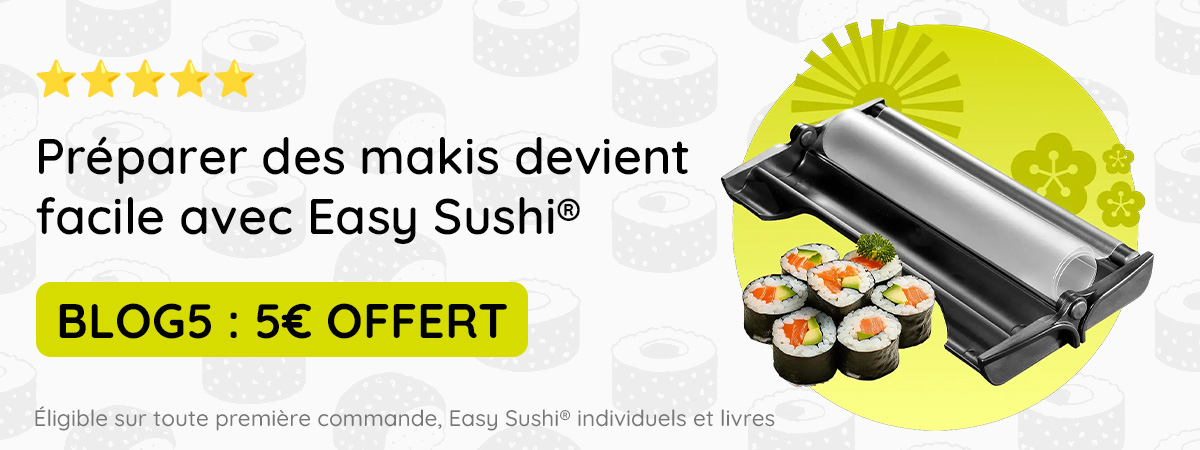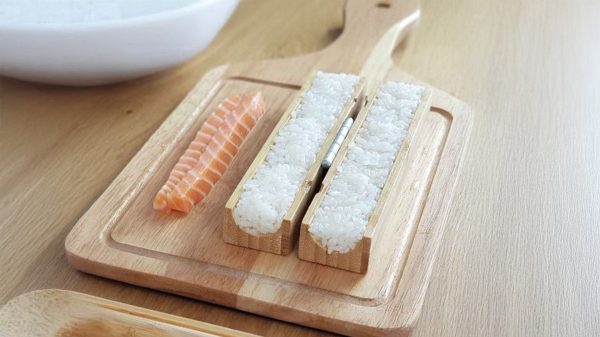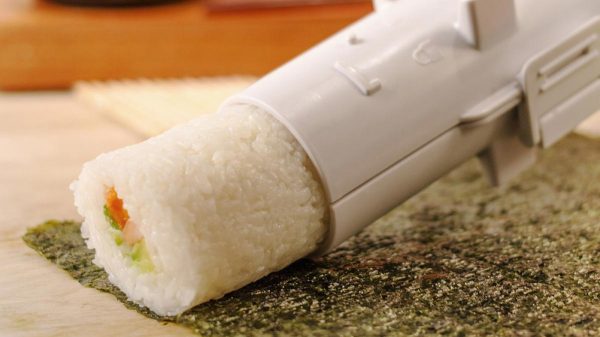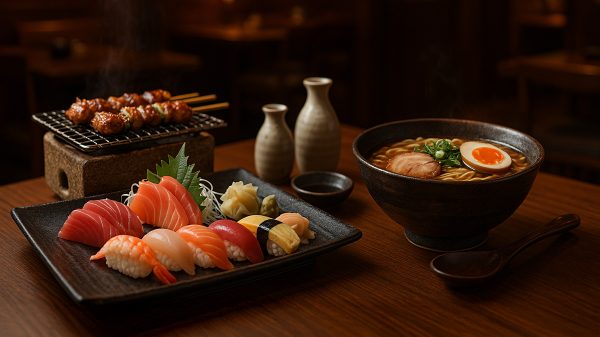7 Common Mistakes to Avoid for Perfect Homemade Sushi
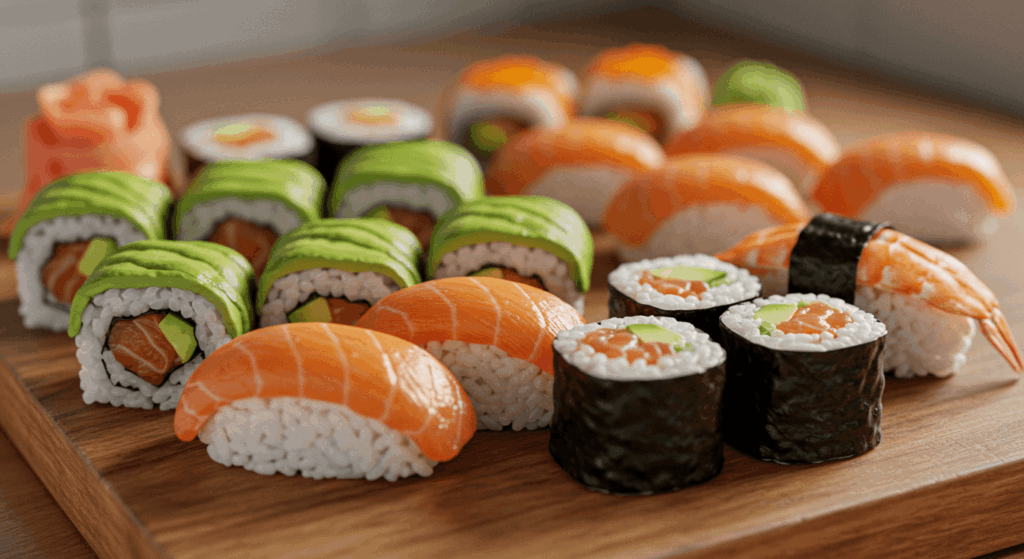
Making sushi at home is an exciting culinary adventure, an immersion in the delicate art of Japanese gastronomy. The idea of creating your own fresh and flavorful nigiri, maki, or sashimi is appealing, and more and more enthusiasts are taking up the task. However, behind the apparent simplicity of these small bites lie precise techniques and common pitfalls that can turn a dream of perfect sushi into a sticky or bland disappointment. Many, after their first attempt, end up with rice that's too soft, a roll that falls apart, or a taste that doesn't live up to their expectations. But make no mistake: perfection is within reach, as long as you know the mistakes to avoid. This article is your guide to avoiding common pitfalls and mastering the art of homemade sushi, ensuring results worthy of the finest Japanese restaurants. Get ready to transform your kitchen into a true sushi masterclass.
Preparing rice and choosing ingredients
Rice is the soul of sushi. Perfect sushi begins and ends with impeccable rice. That's why the first mistakes often lie in its preparation and the selection of accompanying ingredients. Neglecting these fundamental steps compromises your entire culinary creation.
The first and probably most fundamental mistake is to not rinsing the rice properlySushi rice, like most rice, is covered with a layer of starch on the surface. If this starch is not removed before cooking, it will make your rice excessively sticky, mushy, and difficult to handle—far from the ideal texture of distinct but clumped grains expected of good sushi. To avoid this, place your rice in a large bowl and rinse it under cold water, stirring gently with your hands. The water will become cloudy. Discard this water and repeat the process several times, until the rinse water runs perfectly clear. This process may take 5 to 10 rinses, but it is absolutely essential to achieve the desired texture.
The second mistake is to underseason the riceSushi rice is not just plain white rice; it is subtly seasoned with a mixture of rice vinegar, sugar, and salt, called “sushi-zu.” This mixture gives the rice its characteristic, slightly tangy and sweet flavor, perfectly balancing the other ingredients. Many beginners overlook the importance of this mixture or do not use the correct proportions. The secret lies in the balance and method of incorporation. The sushi-zu must be prepared in advance and heated slightly to dissolve the sugar and salt. Once the rice is cooked and still warm, transfer it to a large, non-metallic dish (ideally wooden, such as a hangiri) and pour the sushi-zu evenly. Use a wooden or plastic spatula to “cut” the rice and mix it gently, avoiding crushing the grains. Fan the rice as you mix to cool it quickly and give it a characteristic shine. Well-seasoned and cooled rice is the foundation of successful sushi.
The third error concerns the choice of ingredients and their qualitySushi is only as good as its components. Using fish that isn't sushi or sashimi-grade is a health risk and compromises taste. Raw fish should be impeccably fresh, purchased from a trusted fishmonger who guarantees its quality for raw consumption. Don't hesitate to ask for advice. Beyond the fish, the quality of the other ingredients is just as crucial. Rancid or damp nori (seaweed) sheets, wilted vegetables, or an underripe avocado will ruin the experience. Make sure your nori sheets are crisp and flawless, your vegetables are fresh and crunchy, and your avocado is perfectly ripe but firm. Each element contributes to the harmony of flavors and textures in your sushi.
The rolling and cutting technique
Once the rice is perfect and the ingredients are ready, the next step is assembling and shaping. This is where technique comes into play, and where many mistakes can occur, turning a promising roll into a shapeless mess.
The fourth mistake is to roll sushi badlyRolling is the art of giving the maki its perfect cylindrical shape, neither too loose nor too tight. A roll that is too loose will fall apart as soon as you try to cut it or pick it up with chopsticks. A roll that is too tight will crush the rice and ingredients, making the texture unpleasant. The essential tool here is the makisu, the bamboo mat. To successfully roll, place your nori sheet on the makisu, spread a thin layer of rice evenly (leaving a small strip without rice on the top edge for sealing), then arrange your fillings in the center. Begin rolling, using the makisu to guide and tighten the roll. Apply firm but constant pressure with each turn, making sure to compact the ingredients well. Lightly moisten the edge of the nori so that it adheres well and seals the roll. Practice is essential to mastering this technique, so don't be discouraged if your first few rolls aren't perfect.
The fifth mistake is to cut the rolls incorrectlyAfter spending time rolling a perfect maki, it would be a shame to ruin it with a bad cut. The most common mistake is using a dull or dry knife, which crushes the roll, tears the nori, and forces ingredients out. For a clean and precise cut, your knife must be extremely sharp and moistened. Ideally, use a sushi knife (yanagiba) or a very sharp chef's knife. Before each cut, dip the blade in cold water and wipe it lightly. This prevents the rice from sticking to the blade. Cut the roll in half, then each half in half, and so on, until you have equal-sized pieces (usually 6 or 8 pieces). Use a smooth, even sawing motion, without applying too much pressure. Clean the knife between each cut to ensure flawless slices and avoid transferring rice or residue.
Hygiene and conservation
Beyond technique, food safety and freshness are paramount, especially when handling raw ingredients. Two major mistakes can compromise not only the taste, but also the safety of your homemade sushi.
The sixth mistake is to neglect hygieneHandling raw fish requires impeccable sanitation. Failure to follow basic hygiene measures can lead to bacterial contamination and food poisoning. Before you begin, make sure all your work surfaces, utensils, and hands are spotlessly clean. Wash your hands frequently and thoroughly, especially after handling raw fish or other potentially contaminating ingredients. Use separate cutting boards and knives for raw fish and other ingredients (vegetables, rice) to avoid cross-contamination. Keep your ingredients chilled until ready to use and do not leave them at room temperature for too long. A clean work environment is the first guarantee of healthy and delicious sushi.
The seventh and final mistake is to store sushi incorrectlySushi is a delicate dish that should be eaten shortly after preparation to fully enjoy its freshness and flavor. The most common mistake is preparing it too far in advance or storing it for too long. Once seasoned, sushi rice tends to harden and lose its soft texture if refrigerated for too long. Raw fish, on the other hand, is highly perishable. Ideally, sushi should be eaten within a few hours of preparation. If you must store it, place it in an airtight container in the refrigerator, but do not keep it for more than 24 hours. Avoid freezing sushi at all costs, as this will irreparably alter the texture of the rice and fish. The best approach is to prepare only the amount you plan to consume immediately, thus ensuring an optimal and risk-free eating experience.
Conclusion
Making homemade sushi is a rewarding experience that, with a little practice and knowledge of the mistakes to avoid, can rival the creations of professionals. We explored the seven most common pitfalls, from careful rice preparation and delicate ingredient handling to rolling and cutting techniques, not forgetting the crucial importance of hygiene and storage. Every step, from rinsing the rice to precise seasoning, from choosing the right ingredients to mastering makisu, and from using a sharp knife to impeccable hygiene, contributes to the perfection of your sushi.
Starting to make homemade sushi means embracing a culinary art that requires patience and precision, but the rewards are immense. Don't be discouraged if your first attempts aren't perfect. Every failed roll is a lesson learned, and every mistake avoided brings you closer to mastery. With these tips in mind, you're now equipped to transform your kitchen into a true sushi workshop, where creativity and flavor collide. The pleasure of enjoying sushi that you've made with your own hands, with fresh ingredients and mastered technique, is incomparable. So, don't hesitate, get the right tools, choose your ingredients carefully, and embark on the adventure. Your taste buds will thank you, and you'll undoubtedly impress your guests with homemade sushi that's just as good as restaurant sushi.
